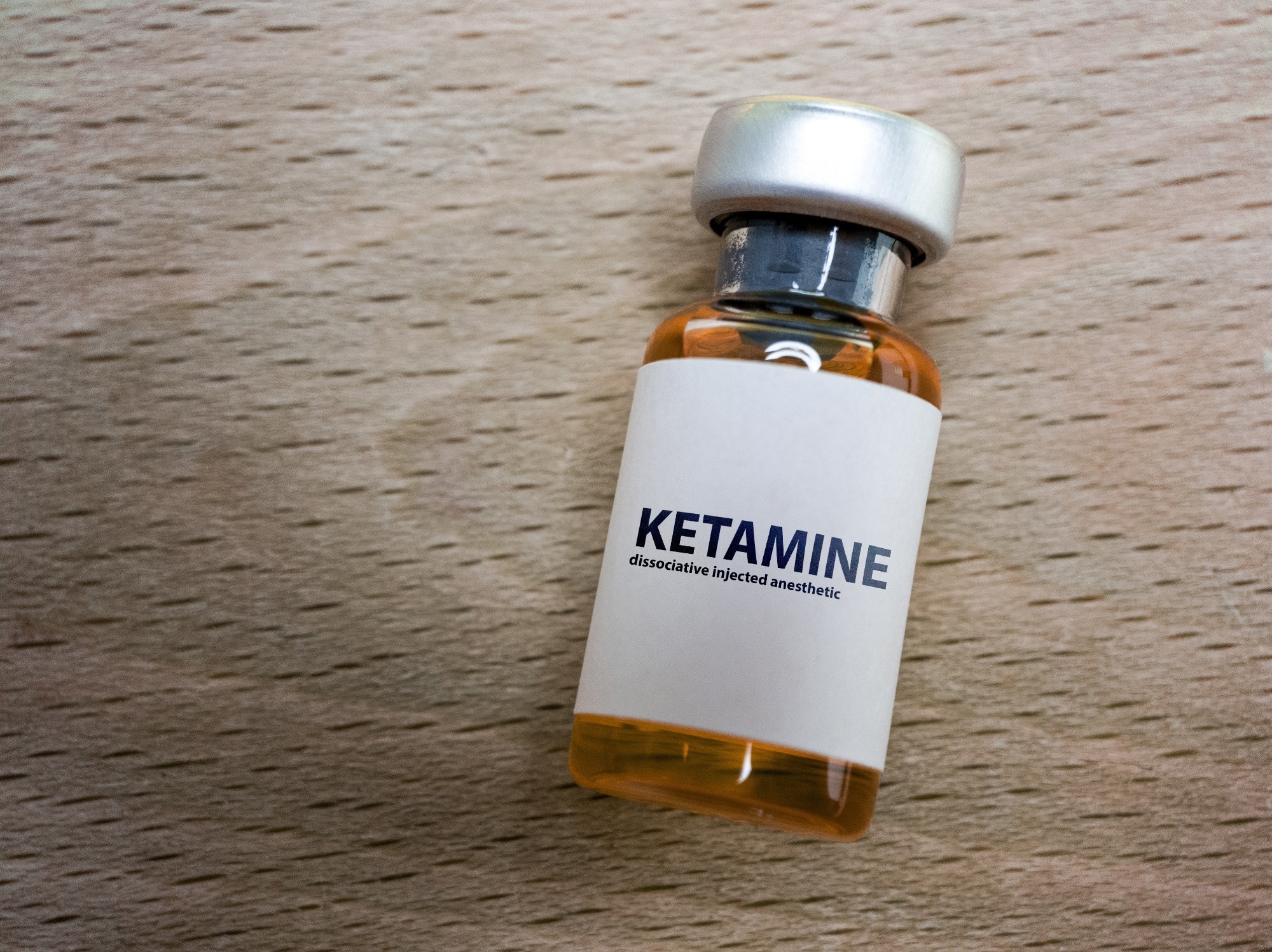Ketamine has a short half-life of about three hours in humans and 13 minutes in murine models of depression. However, the antidepressant activity of ketamine can be sustained for at least 24 hours up to 14 days in humans and at least 24 hours in mice.
 Study: Sustained antidepressant effect of ketamine through NMDAR trapping in the LHb. Image Credit: Sonis Photography / Shutterstock.com
Study: Sustained antidepressant effect of ketamine through NMDAR trapping in the LHb. Image Credit: Sonis Photography / Shutterstock.com
Single dose of ketamine causes sustained antidepressant effects
In the present study, researchers examine the sustained behavioral effects of ketamine using the chronic restraint stress (CRS) murine model. To this end, mice were exposed to 14 days of restraint stress, following which they were treated with a single dose of ketamine.
The forced swim test (FST) and sucrose preference test (SPT) were subsequently used to assess mice for depressive-like behaviors. Liquid chromatography-tandem mass spectrometry (LC-MS/MS) was used to quantify plasma and brain concentrations of ketamine at one hour, 24 hours, three days, and seven days.
As compared to saline-treated mice, ketamine treatment significantly reduced immobility time in the FST and increased preference for sucrose water in the SPT at one and 24 hours. Despite these improvements in depressive behavior, by one hour, brain and plasma concentrations of ketamine significantly declined to levels that were insufficient to inhibit NMDARs. Taken together, these findings agree with previous reports on the short half-life yet sustained behavioral effects of ketamine.
What is the role of LHb suppression in the antidepressant effects of ketamine?
Spontaneous neuronal activity in coronal lateral habenula (LHb) brain slices from CRS mice was measured at one hour, 24 hours, and three days. To this end, significantly higher burst firing of LHb neurons was observed in CRS mice as compared to wild-type mice.
One hour after a single dose of ketamine, the percentage of burst-firing neurons reduced to 13%, which is comparable to 40% observed in saline-treated mice. By 24 hours, the percentage of burst-firing neurons remained low at 44% and 24% in saline- and ketamine-treated mouse brains, respectively.
Thus, a single dose of ketamine in a mouse model of depression leads to sustained inhibition of LHb bursting activity. This mechanism was further explored by examining how long a single dose of ketamine can block NMDAR currents in LHb brain slices. To this end, a stimulating electrode was placed onto the slices and excitatory postsynaptic currents (eEPSCs) were recorded.
In an effort to better understand the role of LHb in the antidepressant effects of ketamine, the researchers performed bilateral infusion of ketamine or a control substance into the LHb of mice and subsequently assessed their depressive-like symptoms. Antidepressant effects were observed in both the FST and SPT at 24 hours, with these effects sustained for up to seven days following the ketamine infusion, thus demonstrating that a localized ketamine infusion produces extended antidepressant effects.
One and 24 hours following ketamine treatment, a significant reduction in the ratio of NMDAR-eEPSCs and AMPAR-eEPSCs was observed. Even after LHb slices were washed in ketamine-free artificial cerebrospinal fluid (ACSF), NMDARs continued to exhibit strong inhibition, thus indicating that ketamine may be trapped in the NMDAR channel pore, rather than endocytosed, and unable to be cleared. Furthermore, the complete the blockade of NMDAR led to a slower recovery of neurons.
The ambient concentration of ketamine appears to strongly regulate the binding and unbinding of NMDAR channels. More specifically, a lower concentration of ambient ketamine that is below the dissociation constant leads to increased unbinding, whereas higher ambient concentrations lead to greater binding.
This phenomenon was utilized in an effort to reduce the ketamine dose needed to achieve sustained effects by blocking LHb NMDARs after ketamine treatment. To this end, the researchers injected CRS mice with 5 mg/kg of ketamine and subsequently stimulated the LH-LHb pathway. This led to increased ketamine NMDAR binding and a slower recovery of NMDAR responses, thereby extending the therapeutic benefits of this combined treatment.
Conclusions
The study findings demonstrate that exploiting the dynamic equilibrium of ketamine-NMDAR interactions by opening local NMDARs at varying plasma ketamine concentrations and activating the LHb neurons could help extend the antidepressant effects of ketamine treatment in vivo.
A recent phase III clinical trial reported AXS-05, an NMDAR inhibitor, utilized a pore-trapping inhibition mechanism to effectively ameliorate depression. Although the clinical efficacy of AXS-05 was not comparable to that of ketamine, its trial results, combined with the current study observations, suggest that the distinct pharmaceutical features of ketamine are crucial for its antidepressant effects. Thus, optimizing specific pharmaceutical properties of NMDAR inhibitors could aid the development of novel antidepressant therapeutics.
Journal reference:
- Ma, S., Chen, M., Jiang, Y., et al. (2023). Sustained antidepressant effect of ketamine through NMDAR trapping in the LHb. Nature. doi:10.1038/s41586-023-06624-1